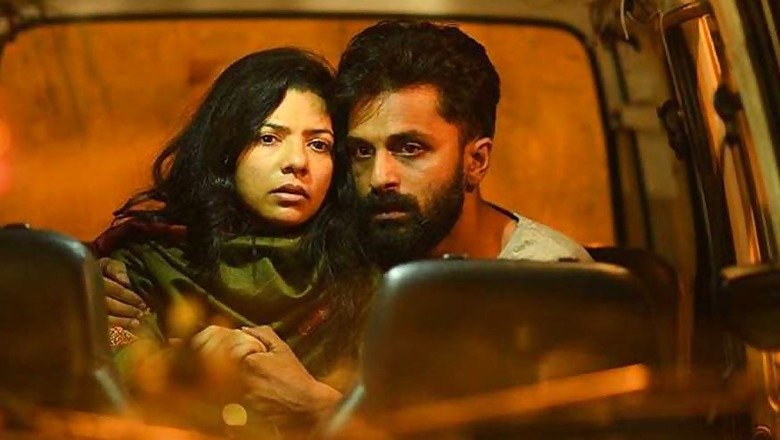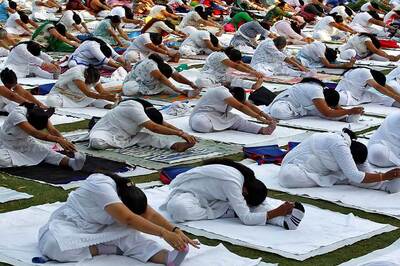
views
S Durga, (its pre-censored name being Sexy Durga), the much-mauled and much-awaited film by Sanal Kumar Sasidharan is finally out on the big screens, thanks to a parallel campaign done by its creators.
To say that it was slashed by the Censor Board only in respect to its title would be wrong, going by the beeps on the soundtrack that outnumber the beeps from my cell phone on any given day.
It would have been a perfect road movie but for the temple rituals that either bracket or create interludes in the main narrative. It would have been a perfect thriller had the hack knives shown in it been put to proper bloody use. It would have been an erotic flick had the protagonists shown any such inclination.
What we get is a patchwork of events that happen in a single night on the road, in a van, and a ritual that takes place in a temple somewhere out there.
The film opens with the shot of an idol of Durga. The rituals constitute an elaborate sequence of men going into trance, little lances skewering their cheeks, the skin on their backs gripped by hooks from which their bodies swing as they are taken around the town in a procession.
Women are mere witnesses to the event. From there, the film is cut to a real woman by the name of Durga, who is eloping with her lover Kabir. They get a lift from a van and there ensues a woeful train of events.
The guy, who watched the film with me, asked, “Are they safe in the end?” I said, “No, they aren’t. They are in a trap.”
In fact, that characterizes the film which doesn’t seem to happen in a real landscape. Of course, there are three events that try to put them firmly on the road map – a sequence involving a police check point, a sequence the couple are confronted by two gentlemen on a scooter, and a sequence were they try to escape when they notice weapons with the men driving them to the railway station. But, on the whole, a mist of vagueness surrounds them all.
Kabir may or not be his name. At one stage, he blurts out ‘Kannan’. She may or may not be ‘Durga.’ The people who drive the car hardly care whether she is Durga or not. They claim (and keep claiming till the end) that they are only trying to help the fleeing couple. But, their attitude is that of a gang of goons compounded when two more join them.
We do not know the past of either Kabir or Durga. We do not know where they are eloping to. We do not know which railway station they are going to or which train they are catching. Similarly, we also know nothing of the gang. We do not know whether they do have a good heart within them as they claim. Perhaps, they are good people (‘with mothers and sisters’) unless they are hired for a crime.
They could be good professionals who do not rape or kill unless they are paid for it. The policemen who do the checking are also vague people. They let them go even though they know they are up to no good. The gentlemen on the scooter are the real moral police. No wonder, they are dressed in white shirts and dhotis. But, the ‘villains’ shoo them away for a good reason. We do not know how the whole proceedings end.
The film shows a society of much confused people who aren’t sure about anything unless they are given defined roles.
Rituals are a great way to escape responsibility. Whether they are temple rituals or the daily rituals of livelihood we go through. Or, the ritual of a couple eloping. Or, the ritual of walking on live coals. Or, the ritual of hanging from metal hooks. Or, the punctual/non-punctual ritual of trains passing by time and again.
This film is a departure from normal art-house movies (even the director’s own films Oralpokkam or Ozhivudivasatthe Kali). It doesn’t let the viewer get used to a comfortable story or socially emotional package or message. It expresses in the form of the suddenly exploding visions of the van lit up with LED illumination and blasting music and the masks and the beheaded doll that keeps swinging.
Perhaps, these visuals talk more than the rest of the film and it is intended to be so.
Woe to the Hindu fanatics, and the Censor Board, and the I&B Ministry who tried to read a non-existent Durga in this tale. The connection is completely absent even in the vaguest way.
To show a Durga idol and then have a character named Durga (a very docile and frightened creature) doesn’t add up to anything either the Ministry’s way or the director’s. Durga is a hapless woman (scared and unsure) who runs away with a confused man named Kabir (we missed a whole lot of lively and pointless discussion about his name) who seems to be straight from the 70s existentialism phase.
When I saw the film first, I recorded this: “This film will catch Malayali males by their balls.” Going by the Malayali males in the film, I doubt it. Poor Durga, she is in the wrong van, with the wrong man, in the wrong state.
(Author is a renowned poet and translator based in Kerala)
















Comments
0 comment